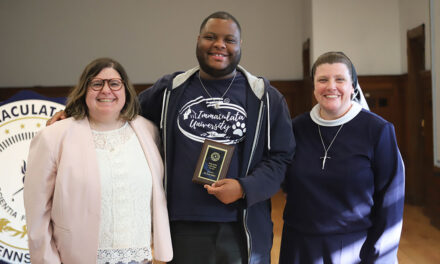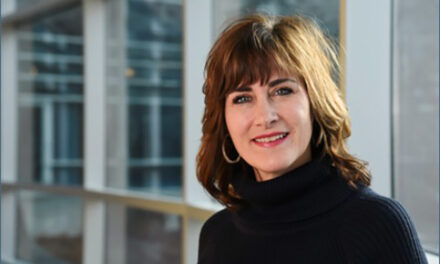By Lydia Szyjka ’09 M.A.
Approximately four million members of the baby boom generation, those born 1946-1964, will retire every year through 2027 according to a recent study by Forbes. However, many Americans are choosing to remain in the workforce, and baby boomers, along with members of Generation X (born 1965-1979), often hold leadership positions.
However, millennials (born 1980-1994) currently make up the largest percentage of the U.S. workforce, at about 35%, while the youngest generation of workers, Generation Z (born 1995-2012), constitutes almost 20%. With people working longer, today’s workforce spans multiple generations, with employees from age 18 to 75 working side by side. Companies invest heavily on employee development, and each departure costs a company roughly one and a half times the former employee’s salary. The remaining employees often bear the burden of picking up the slack, which can lead to low morale and lost productivity.
While these challenges can be significant, leaders who implement structural changes can help make a multi-generational workforce effective, benefiting from each generation’s unique skills, experience and creativity.
Multi-generational expert Ralf Weiser ’10 believes Gen Z and millennials want to work, but they value clear career paths, meaningful work and job flexibility.
Challenges of a Multi-Generational Workforce
As a result of multi-generational workforces, Weiser has noticed differences that can impact workplace relationships. For example, younger workers dislike micromanagement. Instead, “They will figure it out and get the job done,” Weiser said. Younger workers also dislike co-workers withholding job-related information as some older workers equate knowledge-sharing with job security, while younger generations feel withheld information limits their career growth.
Be intentional and clear in voicing your expectations to
– Ralf Weiser ’10
younger workers. That small step can shape the experience
your organization will have in retaining young talent.
Additionally, some baby boomer and Gen X managers may not value the importance of workplace flexibility that Gen Z and millennial workers place on this emerging benefit—especially remote work. Weiser believes that as long as you’re accessible and reachable, it should not matter if an employee is plugged in at home or in the office.
If business leaders don’t adapt to a changing workforce, Weiser warns, they risk losing talented workers. “If we ‘old folks’ don’t pay attention to them, guess what’s going to happen? They are going to walk all over us on their way out of our business,” he emphatically stated.
This is not doom and gloom forecasting. According to a September 2023 article from Forbes, 83% of Gen Z workers count themselves as job hoppers, and a majority of them would leave their current job regardless of securing another position.
Attracting and Retaining Millennial and Gen Z Workers
Weiser has spent most of his career attracting, training, and most importantly, retaining millennial and Gen Z workers. As a teenager in his native Germany, Weiser served as an apprentice for a manufacturing company. In 1989, at the age of 22, he relocated to Chester County, Pennsylvania to serve as the shop manager for a subsidiary of the company.
After gaining roles with additional responsibility over more than ten years, Weiser realized that many of his coworkers—including those younger than him—held college degrees, Weiser wanted to match their skill sets since his engineering background was based on experience rather than formal education. He enrolled in Immaculata University’s undergraduate business administration program in 2005 to broaden his knowledge in statistics, analytics and business practices. He later added a minor in human performance management.
Gleaning experience from his education and career, Weiser published a book in 2024, “Maybe It’s You and Not Them—Attracting and Retaining Gen Z and Millennial Talent: Written for Gen X and Baby Boomers Business Leaders.” The idea for the book emerged after the death of his father, when Weiser’s daughter found a document with a graph outlining her grandfather’s life goals: family, career and financial stability. Weiser realized that three generations of his family—himself, his father and his daughter—all wanted the same things in life.
Weiser observed that younger generations have grown up with so much structure in their lives—everything from PreK through college, sports and even in their personal lives. By contrast, his generation just went with the flow, which can lead to workplace discrepancies. A frequent frustration for younger workers is when managers schedule unstructured and potentially unnecessary meetings that waste valuable time. As Weiser writes, “Purpose is essential to them. Just having the mission statement on the wall isn’t enough. Gen Z and millennials want to know how the mission impacts employee behaviors and habits.”
Top Three Things Younger Generations Want in a Career
In addition to his new book, Weiser also maintains a blog on the topic of Gen Z and millennial workers. In a June 2023 post, he laid out the top three things that the youngest generation seeks in a career: purpose and perspective, career pathways, and work flexibility.

Purpose and Perspective: No generation before has been this concerned about making sure that their value is somehow a good match with that of the company’s. In a recent LinkedIn survey, 87% of Gen Z professionals would be okay leaving a company if the alignment was not there, even if they didn’t have another job lined up. As such, employers should offer a greater deal of transparency and open dialog regarding how and what the company does and how employees may be able to impact the outcome.
Career Pathways: This is a point that most Gen X and baby boomer leader-managers just do not understand. They rose through the ranks by ways of working long, hard hours even if it meant that they had to carve out their own path to getting there.
However, this approach is not so with younger generations. On average, they will give the more tenured folks a puzzled look, thinking “If you have figured this out a long time ago, how come you did not document it so that I can use it for training and onboarding?” Gen Z and millennials prefer that there is a planned structure for learning the job they were hired to do. And they expect that someone has figured out a process and structure for how to make (fast) progress in moving up the career ladder. Are they sometimes a bit too optimistic on how fast they can acquire the needed experience and skill sets? Absolutely, but they are not wrong about a business having a plan on how to upscale their operation. According to Weiser, the workforce should have this as priority one.
Work Flexibility: Weiser also believes there are still a lot of leader-managers who gauge performance with what’s referred to as “bum-in-chair-time.” “Those leaders get bent out of shape when workers roll in at 8:06 a.m. instead of 8 a.m. sharp. These are also the same leaders who see no issue with expecting those very same folks to stay longer if a job did not get done completely. Weiser believes many workers will move on when presented with inflexibility. He contends that getting the job done and leaving no messes for co-workers and customers are more important productivity indicators.
Weiser also points out competing views (oftentimes generationally focused) about where employees work. For many younger workers, if they don’t need to be in the office to do their jobs, why would managers/leaders have them waste time, fuel, tolls, etc. to do so? Weiser suggests leaders figure out a balance between working from home and being at the office for meetings and other company culture-building events.
Looking Ahead: Future Generations and the Workforce
They may be toddlers or grade schoolers now, but soon, Generation Alpha (born 2010 to 2024) will be heading to college and entering the workforce. They are the first generation to be born entirely in the 21st century, and Weiser is eager to see how they will navigate a world shaped by artificial intelligence and evolving technology.
At Immaculata University, the campus reflects a cross-section of generations, with baby boomers, Gen X, millennials and Gen Z among its staff and students. Weiser’s advice to older managers and supervisors: “Be intentional and clear in voicing your expectations to younger workers. That small step can shape the experience your organization will have in retaining young talent.”
Watch a humorous depiction of the generational gap at Immaculata.






